Ask Ethan: what should the black hole event horizon look like?
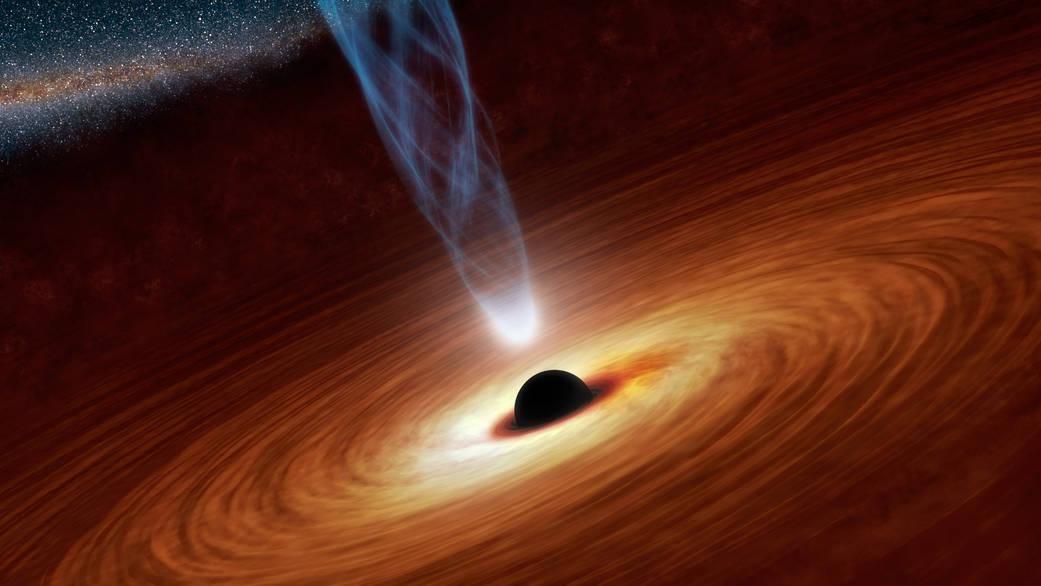
The image of a black hole. Despite its dark color, it is believed that all black holes were formed from ordinary matter, but such illustrations are not entirely accurate.
In April 2017, telescopes from around the world simultaneously collected data on the central black hole of the Milky Way. Of all known in the universe, BHs are located in the center of the galaxy - Sagittarius A * is special. From our point of view, its event horizon is the largest BH available to us. It is so big that telescopes located in different places on Earth would have to see it if they all looked at it at the same time. And although the combination and analysis of data obtained from different telescopes will take months, by the end of 2017 we should receive our first image of the event horizon. So how should it look? This question is asked by one of our readers, confused in the illustrations:
Shouldn't the event horizon completely surround a black hole in the manner of an egg-shell? All artists draw black holes in the form of cut hard-boiled eggs. Why doesn't the event horizon completely surround the black hole?
Of course, on the Internet you can find illustrations of various kinds. But which ones are correct?

A drawing with a simple black circle and a ring around it is an oversimplified representation of the BH horizon.
The oldest view of the illustrations is a simple black disk, covering all the light behind it. It makes sense if you remember what a BH is: in fact, it is a mass collected in one place so large and so compact that the speed of escape from its surface exceeds the speed of light. Since nothing can move so fast, even the transfer of interactions between particles inside the BH, inside the BH collapses to a singularity, and an event horizon is formed around the BH. From this spherical part of the cosmos, light cannot escape, so it should look from any perspective, like a black circle superimposed on the background of the Universe.

BH is not just a mass over an isolated background, it has gravitational effects that stretch, increase and distort light due to gravitational lensing.
But this is not the whole story. Due to gravity, BHs increase and distort the light coming from the back side due to the effect of gravitational lensing. There are more accurate and detailed illustrations of the BH's appearance, and it even has an event horizon, the size of which is correctly correlated with the curvature of space according to GR.
Unfortunately, these illustrations are not without flaws: they do not take into account the material in front of the BH and the accretion disk around the BH. Some images include this.
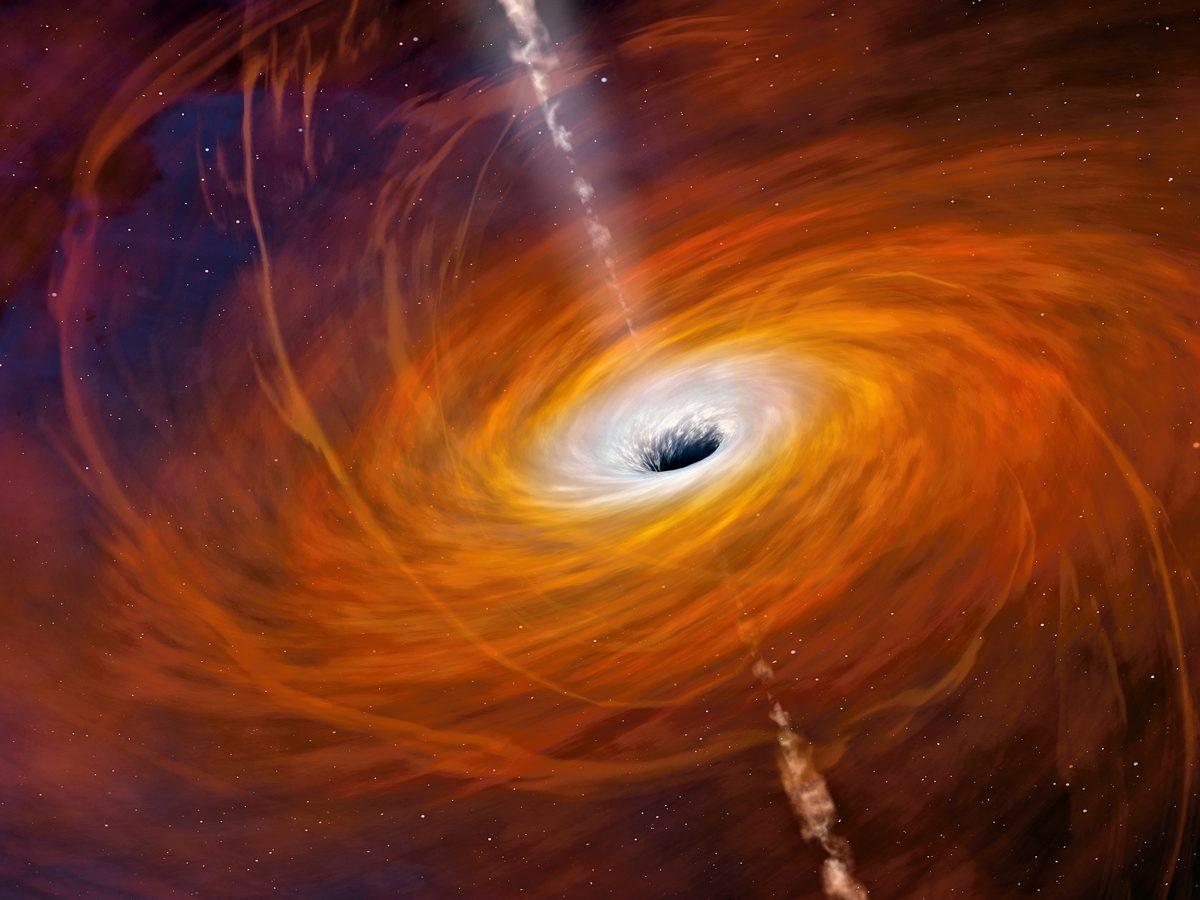
The image of an active BH, occupied by the accretion of matter and the acceleration of its part in the form of two perpendicular jets, can correctly describe the BH in the center of our Galaxy from many points of view.
Due to the enormous gravitational effects, black holes form accretion disks in the presence of other sources of matter. Asteroids, gas clouds, whole stars can be torn apart by tidal forces emanating from such massive objects as black holes. Due to the conservation of angular momentum and due to collisions between different particles falling in a BH, a disk-shaped object appears around it, which warms up and radiates. In the inner regions, the particles periodically fall in the BH, which increases its mass, and the material in front of it closes a part of the sphere that you would otherwise see.
But the event horizon itself is opaque, and you should not see matter behind it.

The black hole in the Interstellar film rather accurately shows the event horizon for a special class of rotating BHs.
You may be surprised that in the Hollywood film Interstellar the BH is depicted more accurately than in many professional images created by or for NASA. But even among professionals there is a lot of misconceptions about BH. BH do not suck matter inside, but only have a gravitational effect. BHs do not tear apart objects due to some additional force — simple tidal forces do this when one part of the falling object is closer to the center than the other. And, most importantly, BH rarely exist in a “bare” state, and are often located near other matter, like the one that exists in the center of our Galaxy.
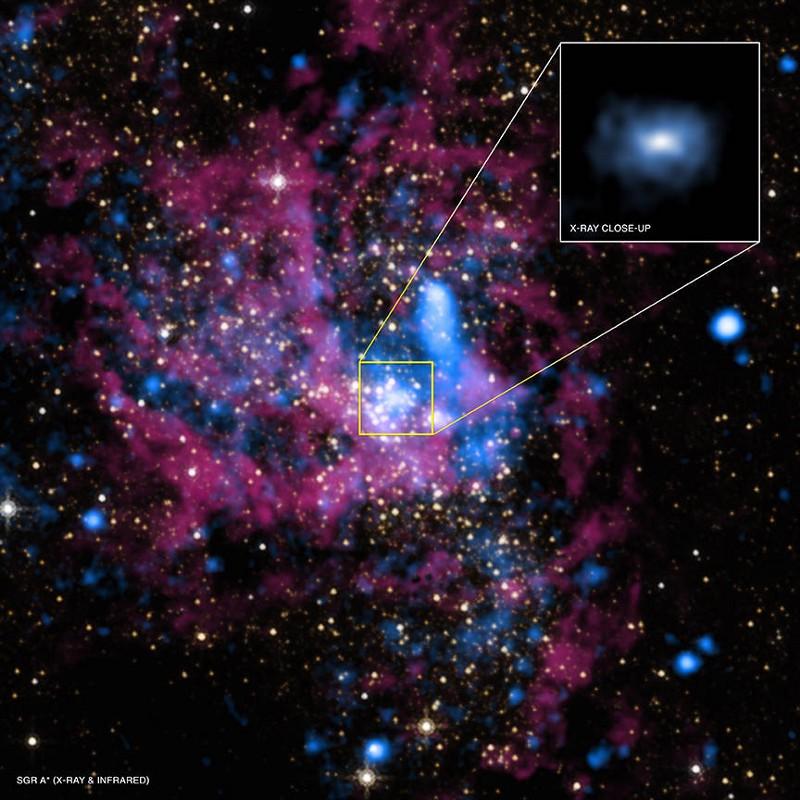
Composite image of BH Sagittarius A * in the center of our Galaxy, made up of X-rays and infrared rays. It has a mass of 4 million solar, and is surrounded by hot gas emitting in the x-ray range
Bearing in mind all this, let us remember, what are these images of boiled eggs? Remember that the BH itself can not be depicted, because it does not emit light. We can only observe in a certain range of wavelengths and see a combination of light bypassing the BH from behind, bending around and in front of it. And the resulting signal will really resemble a boiled hard-boiled egg, cut in half.
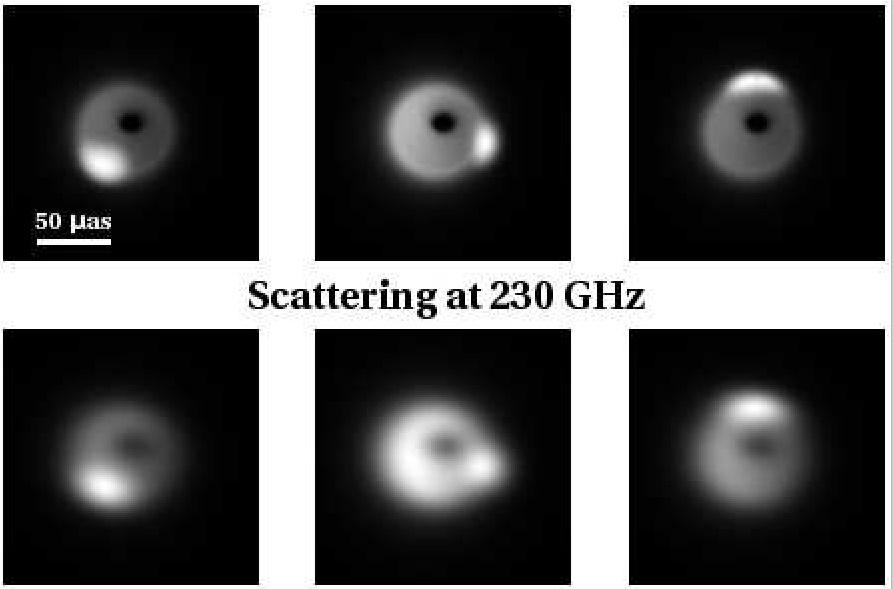
Some of the possible signals of the BH event horizon obtained in simulations of the project " Telescope of the Event Horizon "
The thing is that we are taking pictures. We cannot observe in the X-ray range, because there are too few such photons. We cannot observe in visible light, since the center of the galaxy is opaque to it. And we can not observe in infrared light, because the atmosphere blocks such rays. But we can observe in the radio range, and do it around the world, at the same time, to get the best possible resolution.
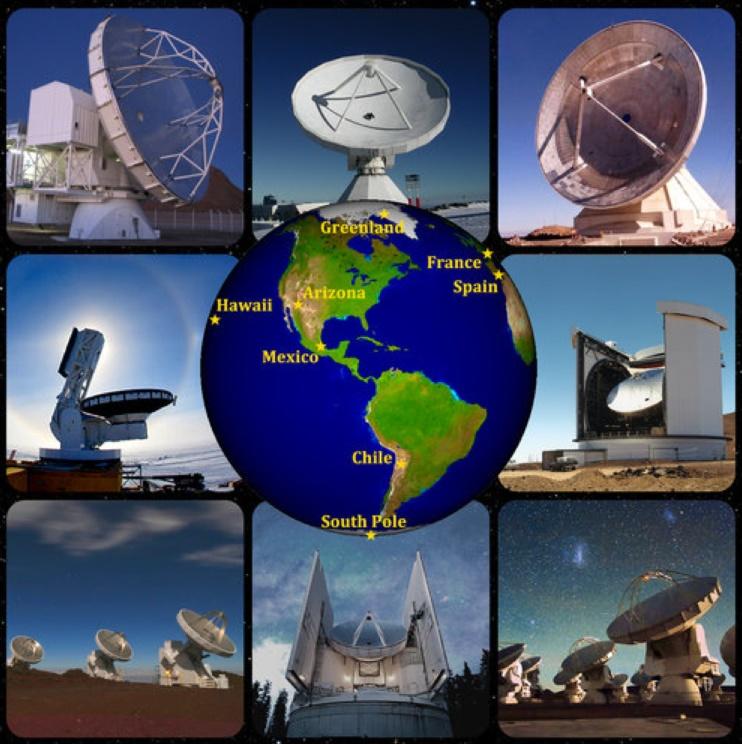
Part of the "Telescope event horizon" from one hemisphere
The angular size of the BH in the center of the Galaxy is approximately 37 angular microseconds, and the resolution of the telescope is 15 angular microseconds, so we should be able to see it! Most of the radio frequency radiation comes from charged particles of matter, accelerated around the BH. We do not know how the disk will be oriented, whether there will be several disks, whether it will be more like a swarm of bees or a compact disk. We also do not know whether he would prefer one “side” of the BH, from our point of view, to the other.

Five different simulations in GR with the use of the magnetohydrodynamic model of the BH accretion disk, and what the received signal will look like
We expect to find a real event horizon, with a certain size, blocking all the light coming from it. We also expect the presence of any signal located in front of him, the unevenness of this signal due to the confusion around the BH, and that the orientation of the disk relative to the BH will determine what you can see.
One piece will be brighter when the disc rotates in our direction. The other side is dimmer when the disc rotates away from us. The contour of the event horizon may also be visible due to gravitational lensing. More importantly, the location of the disk to us by an edge or a plane will greatly influence the character of the received signal, as can be seen in the first and third squares of the figure below.

The location of the disk to us by an edge (two right squares) or a plane (two left squares) will greatly influence which BH we will see
We can check other effects as well:
• does the BH size predicted by GR
• whether the event horizon is round (as predicted), or elongated, or flattened at the poles,
• does the radio emission go beyond what we think
or there are still some deviations from the expected behavior. This is a new level of physics, and we are on the verge of its direct verification. One thing is clear: no matter what the “Telescope of the Event Horizon” sees, we will definitely learn something new and beautiful about some of the most extreme objects and conditions in the Universe!
Ethan Siegel - astrophysicist, popularizer of science, blog Starts With A Bang! He wrote the books Beyond The Galaxy , and Treknologiya: Star Trek Science [ Treknology ].
All Articles